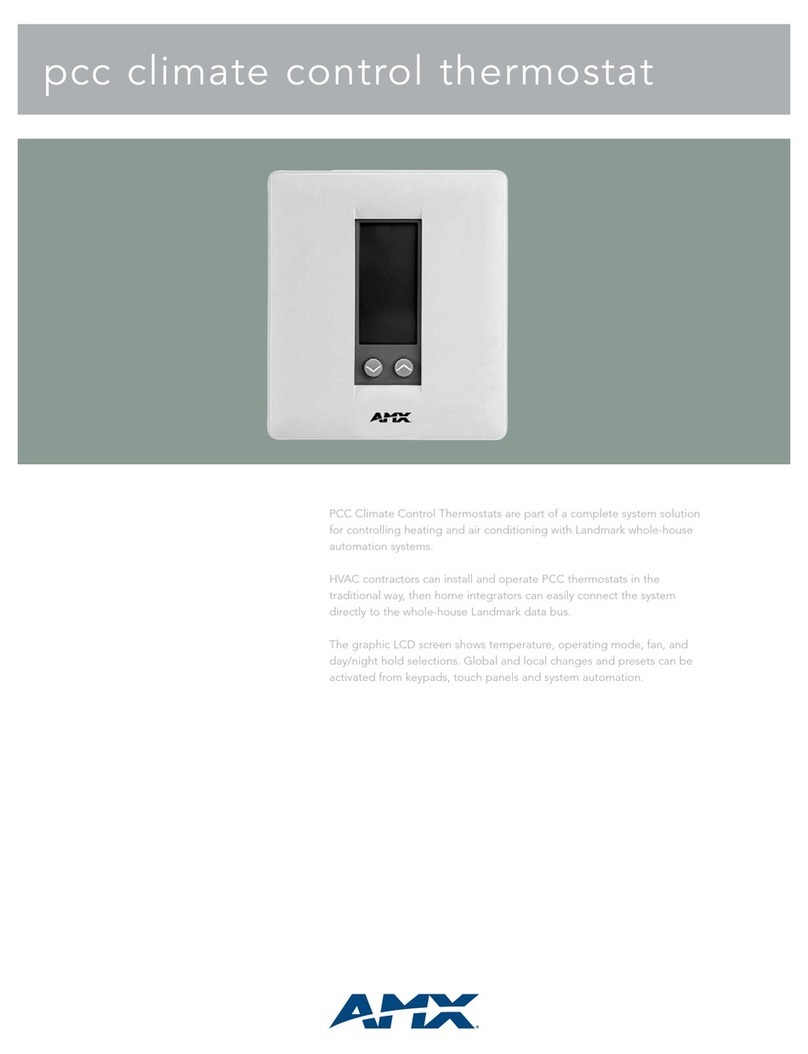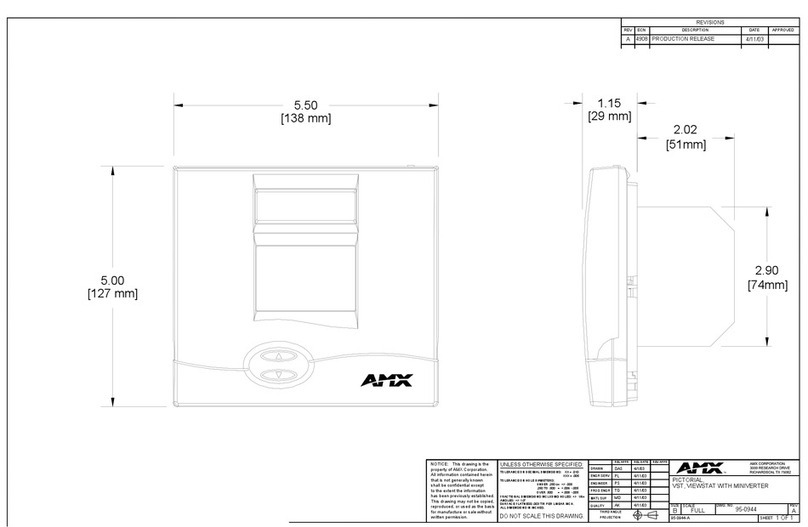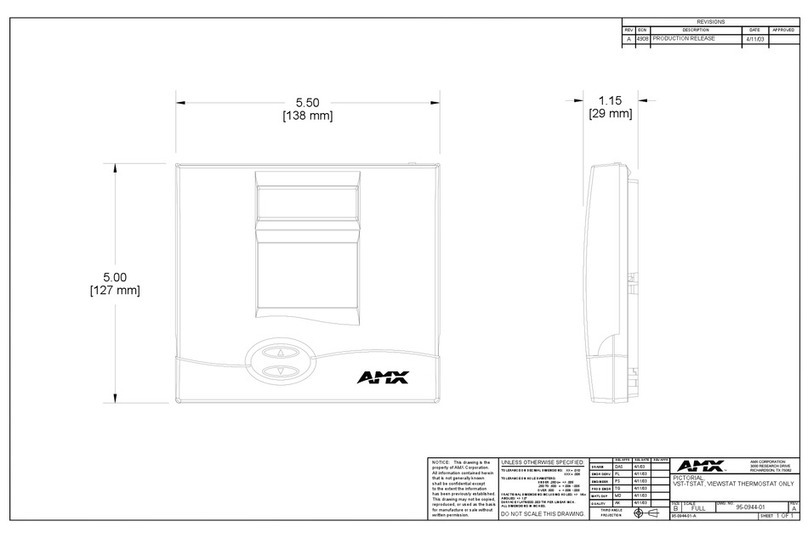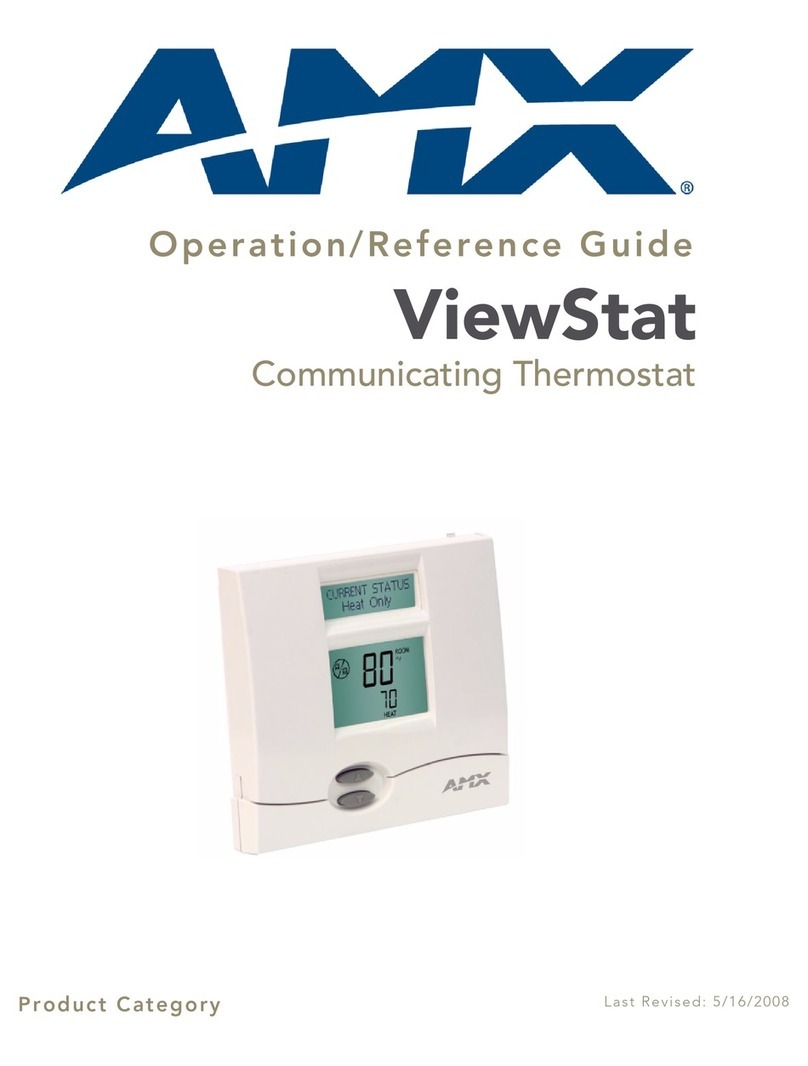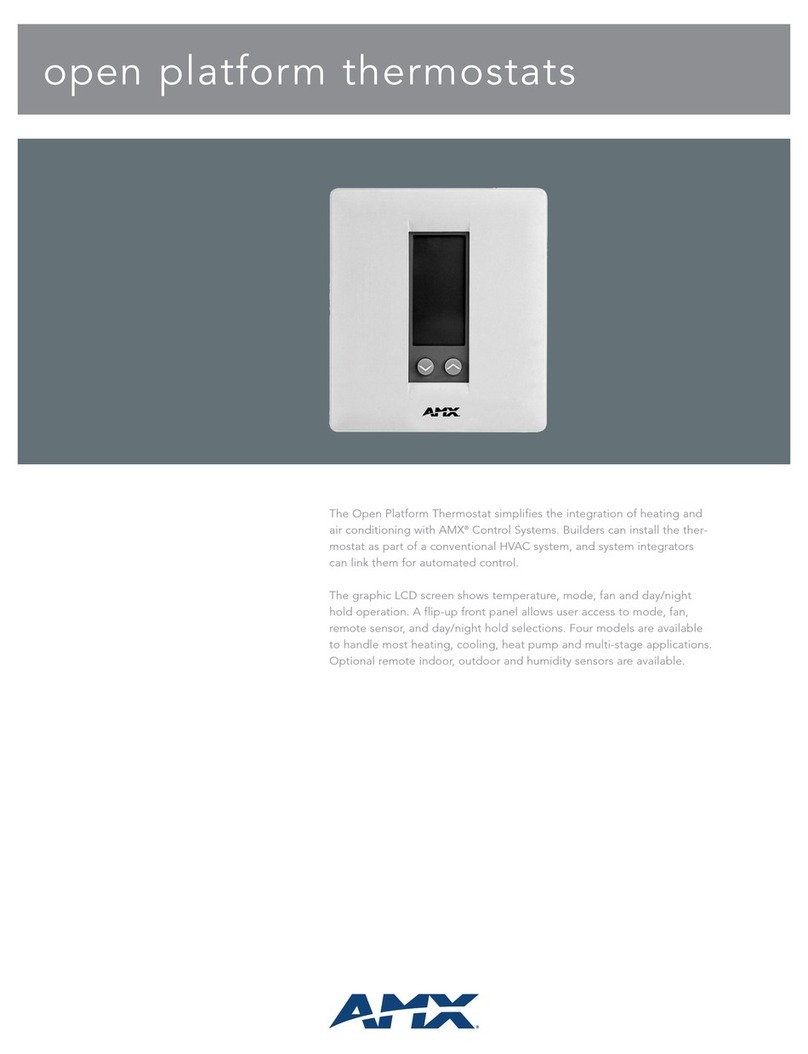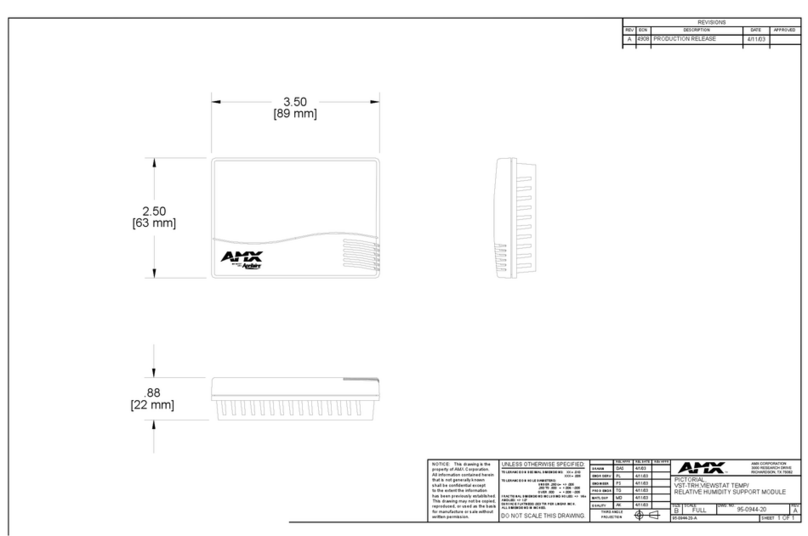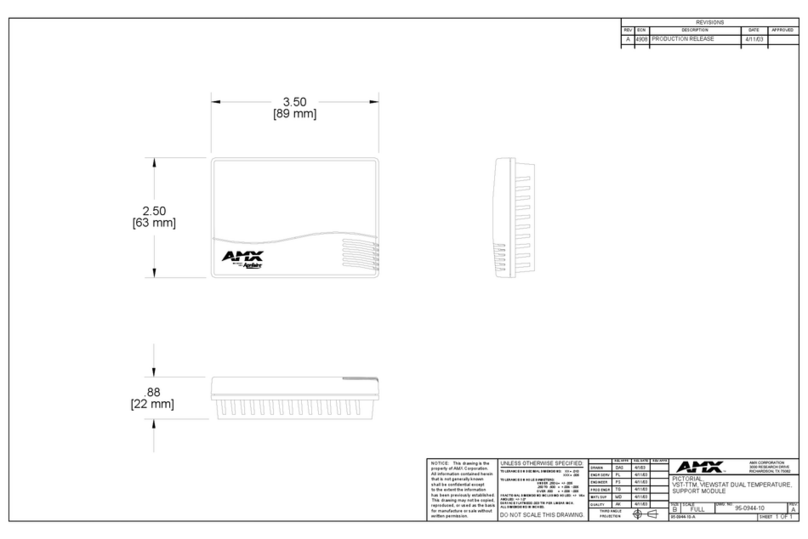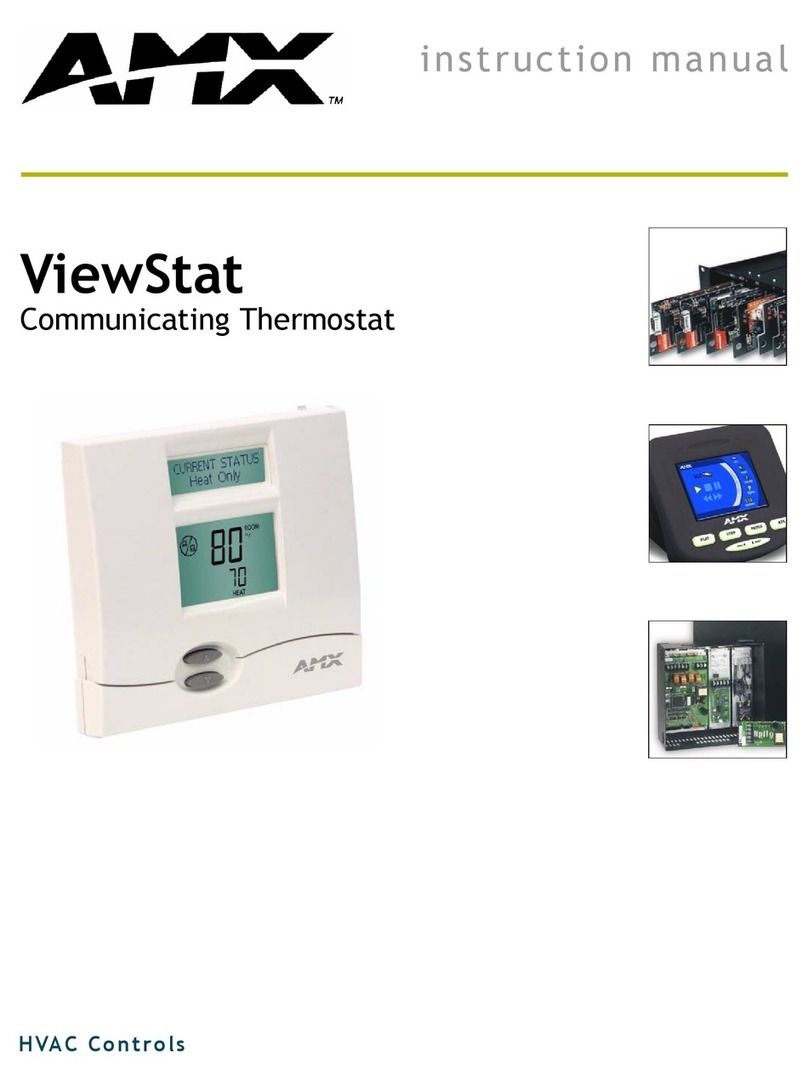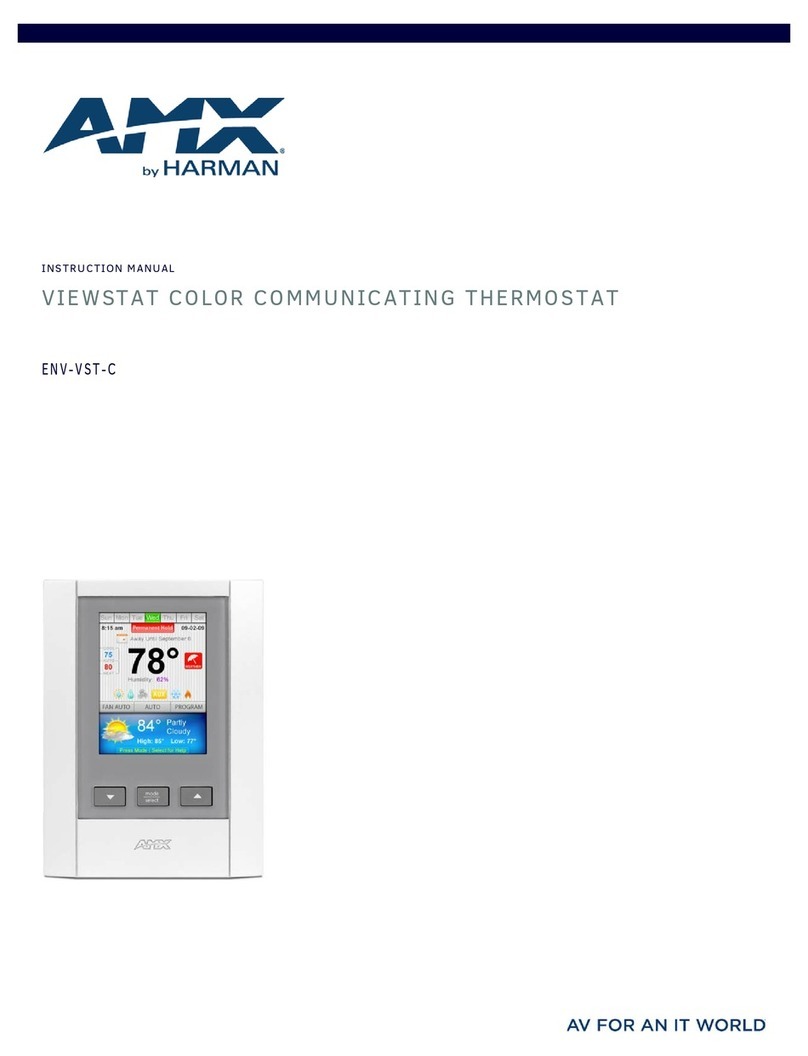ViewStat Programming Protocol
2ViewStat Communicating Thermostat - Programming Protocol Reference Guide
Global Address Commands
Global Address commands are those commands that do not specify any address in the command
header (i.e. SN T?). As with the Explicitly Addressed Commands described above, as this
command is transmitted, each device connected will receive it into their buffer. Since there is no
address, the units will recognize this as a global command. Each unit will complete the
interpretation of the command, act on it, and respond back to the host. However, unlike the Explicit
commands where only one unit will be responding, global commands imply that each unit will be
responding. Therefore the responses from global commands must be scheduled to prevent
collisions over the communications channel. Each device waits for its turn to issue its response.
The order of the response coincides with the unit address. Therefore the thermostat with address #1
will respond first, then #2, #3, on up to #64.
Responses from a global command can begin as quickly as 20 milliseconds after the command was
sent. The actual time lapse for the first response is dependent on the lowest addressed device on the
thermostat network. If there was no address #1 on the channel, then the first response opportunity
will be idle; simply passing time until the next response opportunity. Of course, if there is no
address #2 either, then there will be a delay as this opportunity passes. If no response begins within
265 * (Lowest Address) milliseconds, then one or more of the units did not understand the
command, the unit is in QUIET or SILENT mode, or is off-line. The last unit to respond will be the
unit with the highest address on the channel. Since the highest allowed address is 64, the longest
delay time for the start of the last response is approximately 17 seconds.
Unsolicited Responses
Change-Of-State (COS) responses are sent whenever a COS is detected for a condition specified in
the COS commands, when the COS has been turned "ON". There are twelve COS commands
described in detail in the Communication Control Commands section on page 10. COS responses
are sent so that a host computer connected to the thermostat network need not poll in order to see if
any thermostat variable change has taken place.
In unsolicited responses, no actual command has been sent down to solicit the response (once the
COS commands are sent, the unit will automatically respond on a change of state). Unsolicited
responses are scheduled according to address, in a similar manner to global responses. Each device
waits for its opportunity to come up, and issues its response at that time.
Unsolicited responses can begin as quickly as 20 milliseconds after the COS was detected. As with
global responses, unsolicited responses are issued only during the unit’s assigned opportunity. COS
responses will be received from a specific device no faster than X*265 milliseconds (X is defined
as the number of thermostats on the network, which is configurable in Thermostat Setup), since the
unit will only respond in its unique opportunity.
Do not skip addresses unless absolutely necessary to avoid unwanted delays in
responses.
Since the signal used to synchronize every device is the <CR> terminator of a
command, the host must issue a <CR> every 12 hours. Note that any command
send down the communications link from the host qualifies as a synchronizing
transmission.












